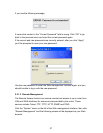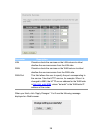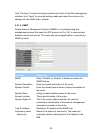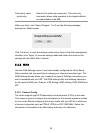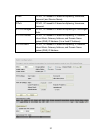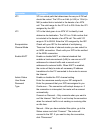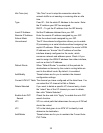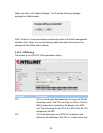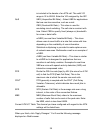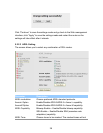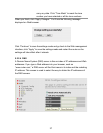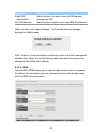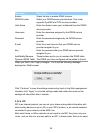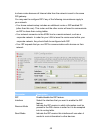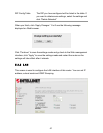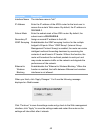
35
is included in the header of an ATM cell. The valid VCI
range is 32 to 65535. Enter the VCI assigned by the ISP.
QoS
UBR (Unspecified Bit Rate) – Select UBR for applications
that are non-time sensitive, such as e-mail.
CBR (Constant Bit Rate) – This class is used for
emulating circuit switching. The cell rate is constant with
time. Select CBR to specify fixed (always on) bandwidth
for voice or data traffic.
nrtVBR (non-real time Variable Bit Rate) – This class
allows users to send traffic at a rate that varies with time
depending on the availability of user information.
Statistical multiplexing is provided to make optimum use
of network resources. Multimedia e-mail is an example of
nrtVBR.
rtVBR (real time Variable Bit Rate) – This class is similar
to nrtVBR but is designed for applications that are
sensitive to cell-delay variation. Examples for real-time
VBR are voice with speech activity detection (SAD) and
interactive compressed video.
PCR
Divide the DSL line rate (bps) by 424 (the size of an ATM
cell) to find the PCR (Peak Cell Rate). This is the
maximum rate at which the sender can send cells.
CDVT
PCR generally is coupled with the CDVT (Cell Delay
Variation Tolerance), which indicates how much jitter is
allowable.
SCR
SCR (Sustain Cell Rate) is the average rate over a long
interval, in the order of the connection lifetime.
MBS
MBS (Maximum Burst Size) refers to the maximum
number of cells that can be sent at the peak rate. Enter
the MBS, which is less than 65535.
Current ATM VC Table
The channel you have configured with regard to the ATM
settings will be listed here.
When you finish, click “Apply Changes.” You’ll see the following message
displayed on Web browser.



